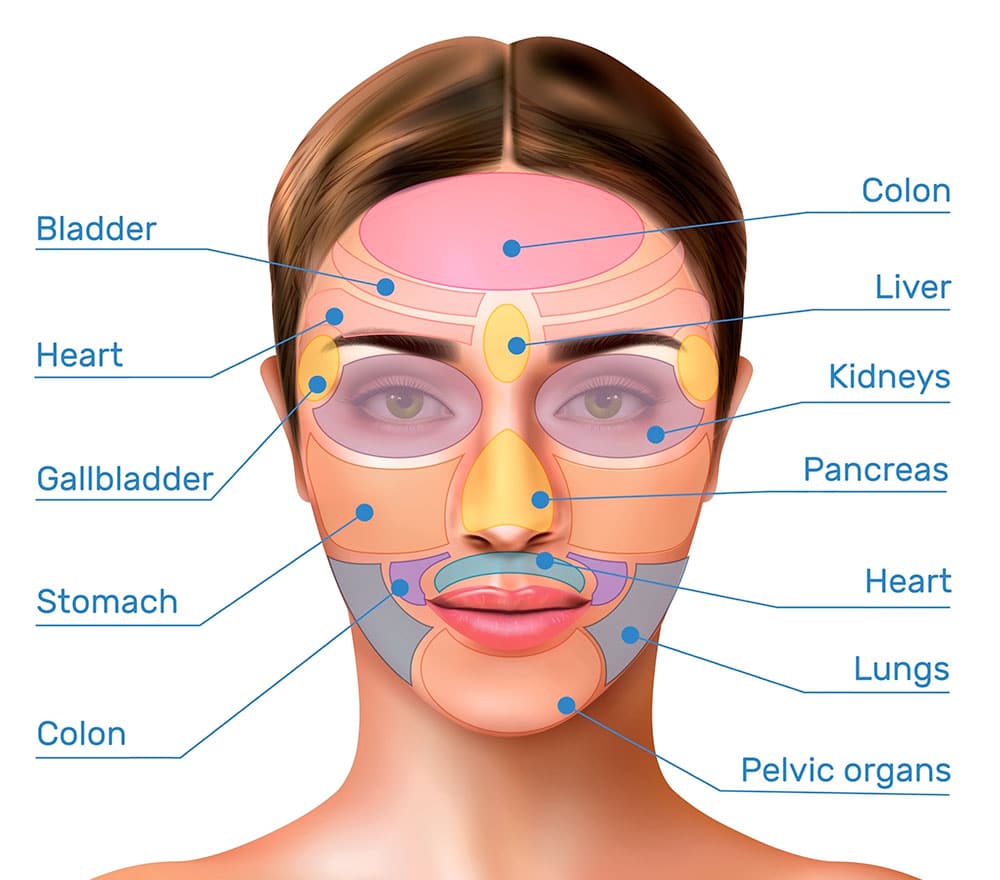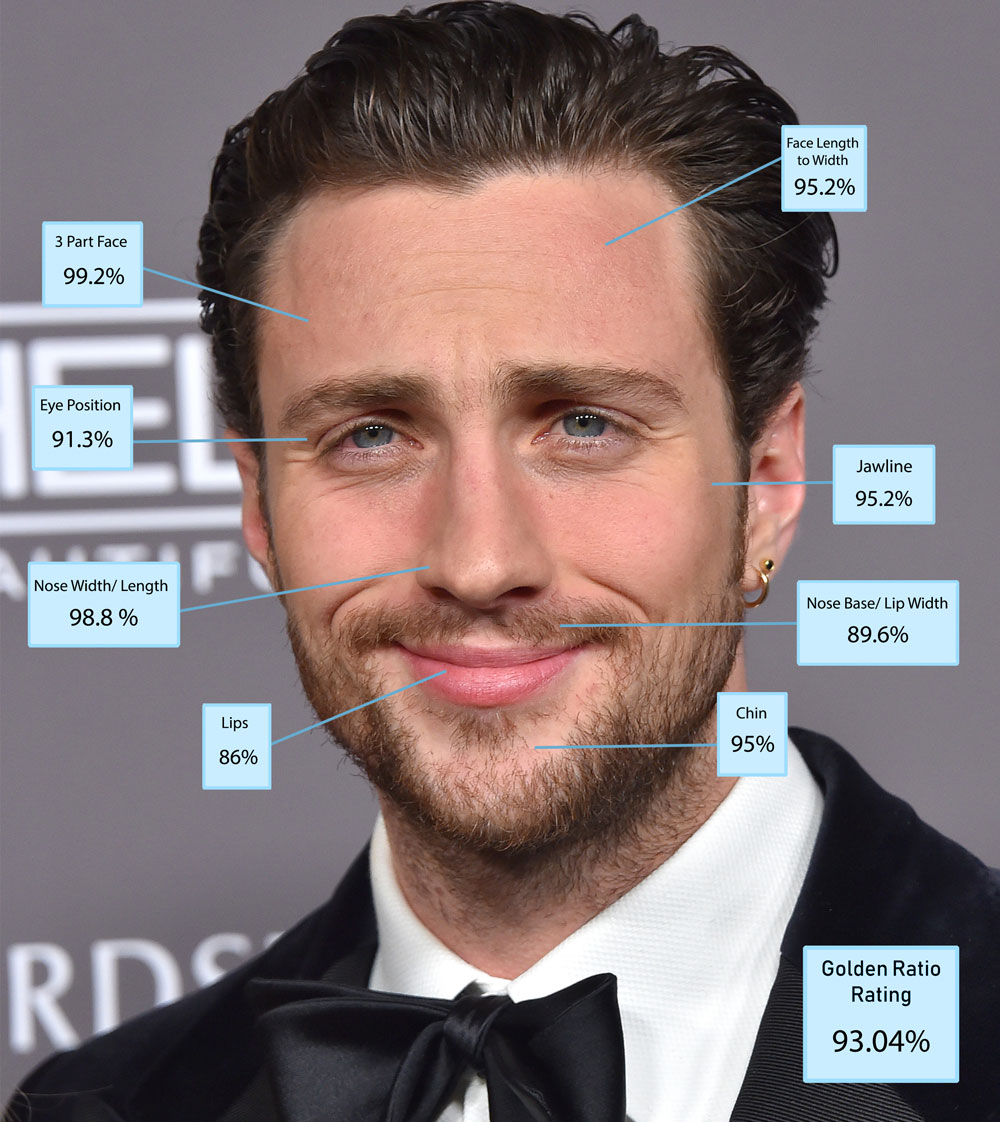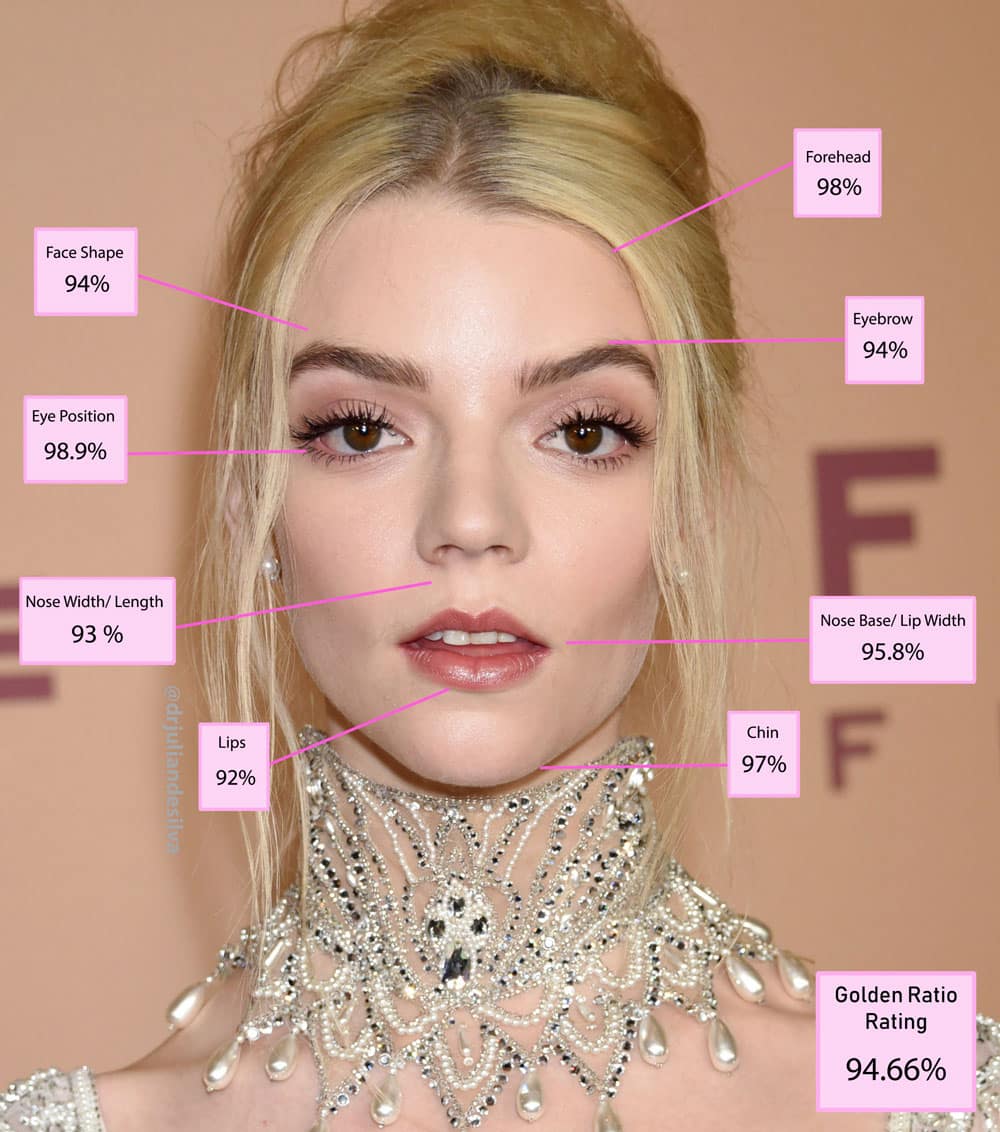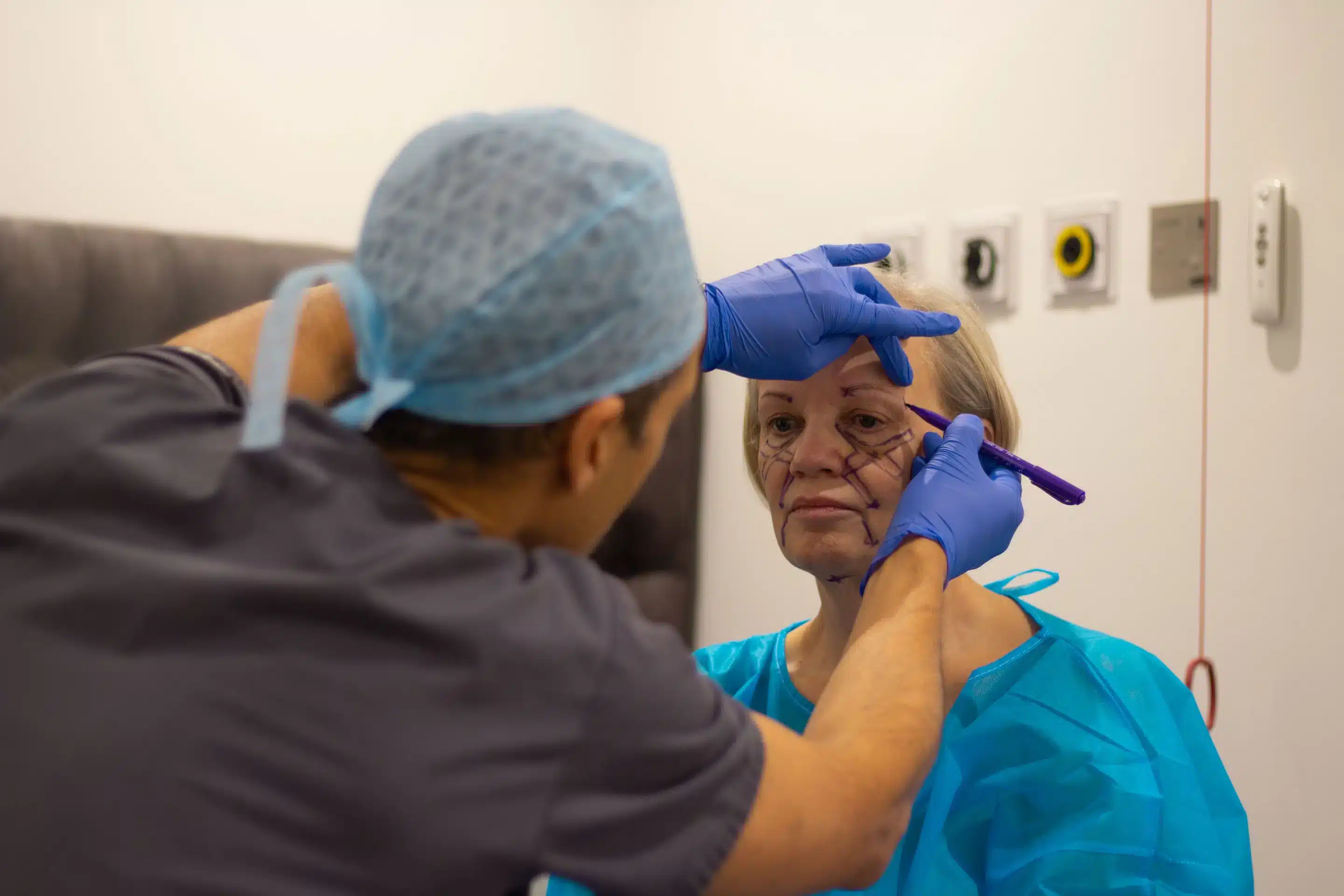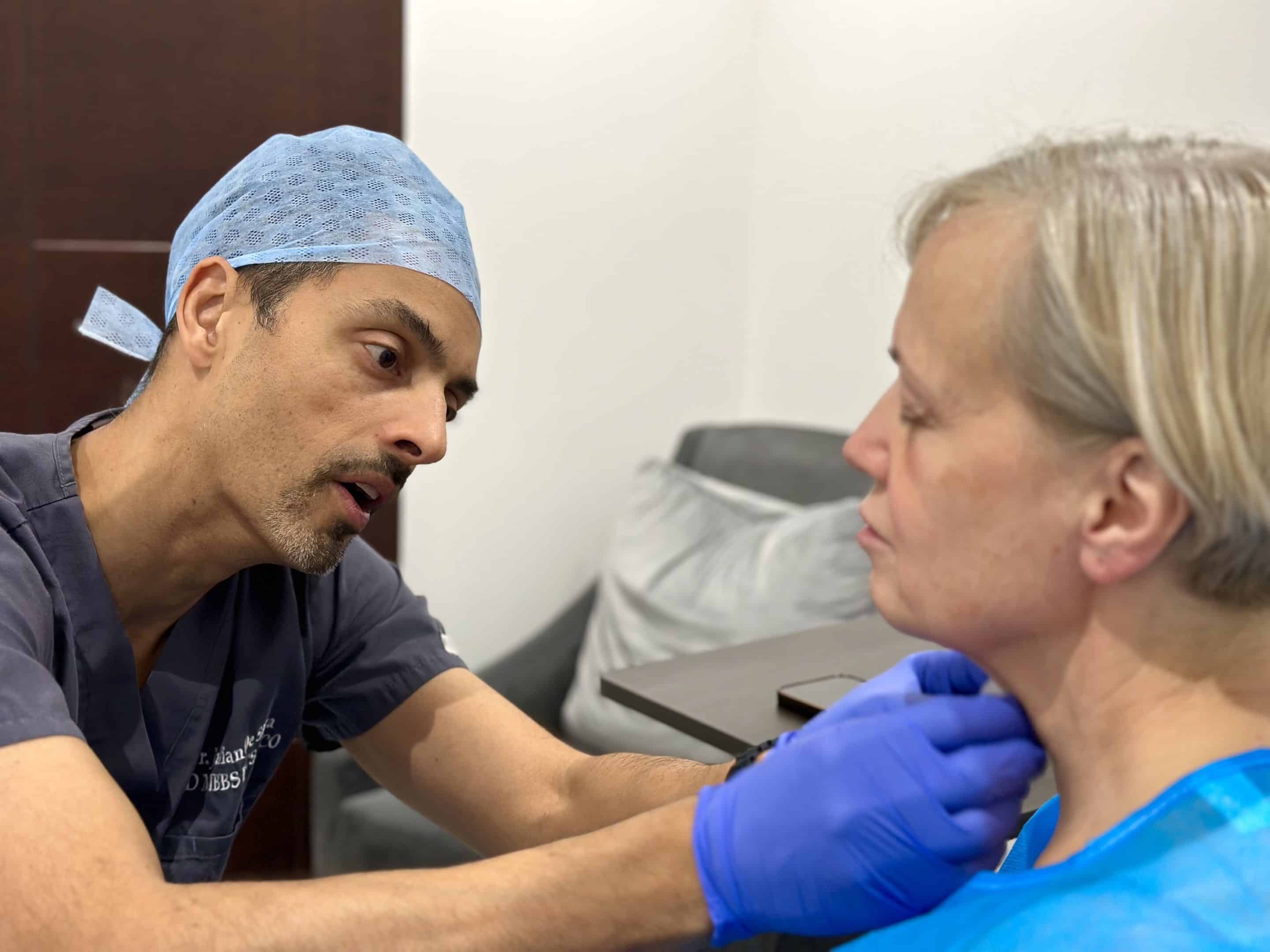Is it possible to define beauty? Why do we find one person more attractive than the other? Is it possible to enhance our face in a non-surgical way to meet objective beauty standards?
These same questions led Dr. Julian De Silva, a world-renowned facial cosmetic and plastic surgeon, to conduct a pioneering study whereby utilisation of the Phi Golden Ratio is used to scientifically evaluate the human face. As a result, he now uses a customised facial mapping technique, along with non-surgical treatments and facial plastic surgery, to enhance facial beauty in his Harley Street, London office.
What is Facial Mapping?
Facial mapping in facelift surgery, also known as skin mapping, involves the meticulous analysis of facial structure, skin condition, and underlying anatomical features to customise the surgical approach. By mapping out the unique characteristics of a patient’s face, surgeons can strategise the most effective techniques to address specific concerns and achieve natural-looking rejuvenation. Face mapping comes from Chinese and Ayurvedic practices that assess overall health by looking at facial skin. This technique has evolved over the centuries and is used today to accurately assess the condition of the skin to design the best treatment plan.
Ayurvedic Face Mapping
In Ayurvedic philosophy, facial proportions are more than aesthetics; they reflect inner harmony. According to this approach, each facial feature corresponds to specific aspects of physical and emotional well-being. Balanced features such as symmetry between the eyes and proportional spacing of the nose and mouth are seen as signs of vitality and a stable internal state.
Ayurvedic face mapping suggests that by addressing any internal imbalances, one may naturally enhance facial symmetry and proportion. While this view aligns with modern beauty standards, which also value symmetry, Ayurveda emphasises that true beauty radiates from a balanced and harmonious inner state.
What is a face map in Chinese medicine?
In Traditional Chinese Medicine (TCM), facial proportions are thought to reveal insights into the body’s internal balance and energy flow, or “Qi.” According to TCM, each part of the face corresponds to different organ systems and emotional states; for example, the forehead is connected to the heart and mind, while the nose reflects the spleen and stomach. Facial symmetry and balanced proportions are viewed as indicators of internal health and vitality, suggesting that a harmonious inner state can contribute to more attractive, balanced features. Practitioners believe that by nurturing organ health and balancing Qi through diet, acupuncture, and herbal treatments, facial harmony may improve, naturally enhancing one’s appearance. While scientific research in this area is still evolving, this perspective encourages an integrated approach to beauty that values the connection between internal balance and external symmetry.
Dr. De Silva’s modern cosmetic application
Traditional face mapping has evolved into a sophisticated tool for assessing facial structure and skin condition in modern aesthetic practices. Initially developed to connect facial features with internal health, today’s facial mapping techniques focus on evaluating structural nuances, symmetry, and proportions in detail. By understanding how each section of the face contributes to overall harmony, plastic surgeons can pinpoint areas where adjustments can enhance natural beauty and balance.
In personalised surgical planning, facial mapping allows practitioners to assess factors such as skin thickness, muscle tone, bone structure, and volume distribution across different facial regions. For instance, signs of volume loss in the cheeks or subtle asymmetries in the jawline can be identified and addressed with precision. These observations help surgeons like Dr. Julian De Silva design customised surgical plans that respect each patient’s unique anatomy and deliver natural, balanced results. Combining traditional insights with advanced imageing and planning technologies, modern face mapping ensures a tailored approach that aligns with each patient’s aesthetic goals while maintaining structural harmony.
How does facial mapping work in cosmetic surgery?
Facial mapping divides the skin into 14 different zones, such as forehead, eyes, cheeks, chin, and ears. It also takes into account the differences between the left and right side of the face, the spacing between the facial features, and analyses symmetry. In addition to this, the skin quality, muscle tone, fat distribution, and bone structure are also analysed. Advanced imageing technologies may be utilised to obtain detailed 3D representations of the face. Dr. De Silva, London expert in advanced surgical and non-surgical cosmetic treatments, takes face mapping one step further to include the Phi Golden Ratio of beauty.
Facial mapping and the Phi Golden Ratio
People have always been interested in beauty and making beautiful things. The ancient Greeks used a mathematical ratio to measure beauty and harmony. This golden ratio was used in Greek architecture, famous renaissance paintings and is the basis for Leonardo da Vinci’s Vitruvian Man, his definition of the perfect male body. In his search for a tool to objectively measure beauty, Dr. De Silva applied this Golden Ratio of beauty to the human face with customised face mapping at his Harley Street office in London.
Mapping the beauty of famous people
Dr. De Silva´s pioneering UK study has led to several interesting worldwide discoveries. According to this Golden Ratio, Aaron Taylor Johnson is the world’s most handsome man and Anya Taylor Joy is the most beautiful woman. Other actors such as Angelina Jolie and Brad Pitt score high in meeting these beauty standards as well. The most interesting part about this striking research? It is not only possible to understand natural beauty but also to effectively enhance it with non-invasive facial cosmetic treatments. Objective measurement in combination with skilled artistry makes natural beauty more accessible to everyone.
Facial mapping with Dr. De Silva
What to expect in a facial mapping consultation
Through facial mapping, Dr. De Silva will identify the areas of the face that require attention, such as sagging skin, deep wrinkles, volume loss, or asymmetry. Each area of concern is mapped out and analysed in relation to the underlying facial anatomy.
Customised treatment plan
Based on the findings of the face mapping analysis, a personalised treatment plan is formulated to address the specific needs and goals of the patient. This may involve a combination of surgical techniques, such as face lift, neck lift, fat grafting, or skin resurfacing.
Precision execution during surgery
By carefully analysing facial proportions and symmetry, Dr. De Silva tailors his surgical approach to each patient’s unique structure, ensuring that every adjustment enhances overall facial harmony. Facial mapping allows Dr. De Silva to identify precise areas where volume restoration, lifting, or contouring can create the most impactful yet subtle improvements. This method is especially effective in his deep plane face and neck lifts, where adjustments in one area, such as the cheeks or jawline, are planned to enhance complementary features across the face. Through this detailed mapping, Dr. De Silva combines science and artistry to produce outcomes that respect and enhance each patient’s natural facial proportions, creating results that are both refined and authentic.
Postoperative care and monitoring
After facelift surgery, meticulous postoperative care and ongoing monitoring are crucial for optimal healing and long-term results. Dr. De Silva provides patients with comprehensive recovery instructions and schedules regular follow-up appointments to assess progress, address any concerns, and ensure the best possible outcome.
What are the benefits of facial mapping?
Dr. Julian De Silva utilises advanced facial mapping techniques to achieve natural and balanced results in facial surgery. By carefully analysing facial proportions and symmetry, he tailors his surgical approach to each patient’s unique structure, ensuring that every adjustment enhances overall harmony. Face mapping allows Dr. De Silva to identify precise areas where volume restoration, lifting, or contouring can create the most impactful yet subtle improvements. This method is especially effective in his deep plane face and neck lifts, where adjustments in one area, such as the cheeks or jawline, are planned to enhance complementary features across the face. Through this detailed mapping, Dr. De Silva combines science and artistry to produce outcomes that respect and enhance each patient’s natural facial proportions, creating results that are both refined and authentic.
Schedule a facial mapping consultation with London cosmetic surgeon Dr. De Silva
Are you curious about the Golden Ratio? Do you want to learn more about treatments that can enhance your natural beauty? Dr. De Silva is a renowned facial cosmetic and plastic surgeon with extensive experience in London, Los Angeles and New York. He now offers comprehensive surgical and non-surgical treatments at his Harley Street practice in London that can enhance the Phi Golden Ratio for your face. Schedule your consultation online today.

